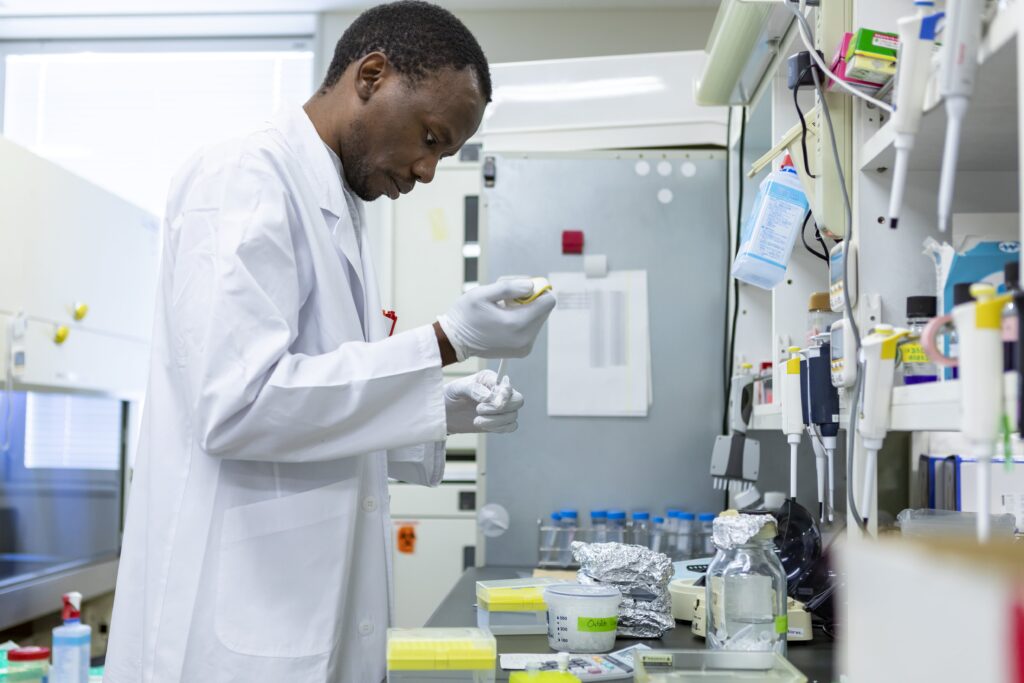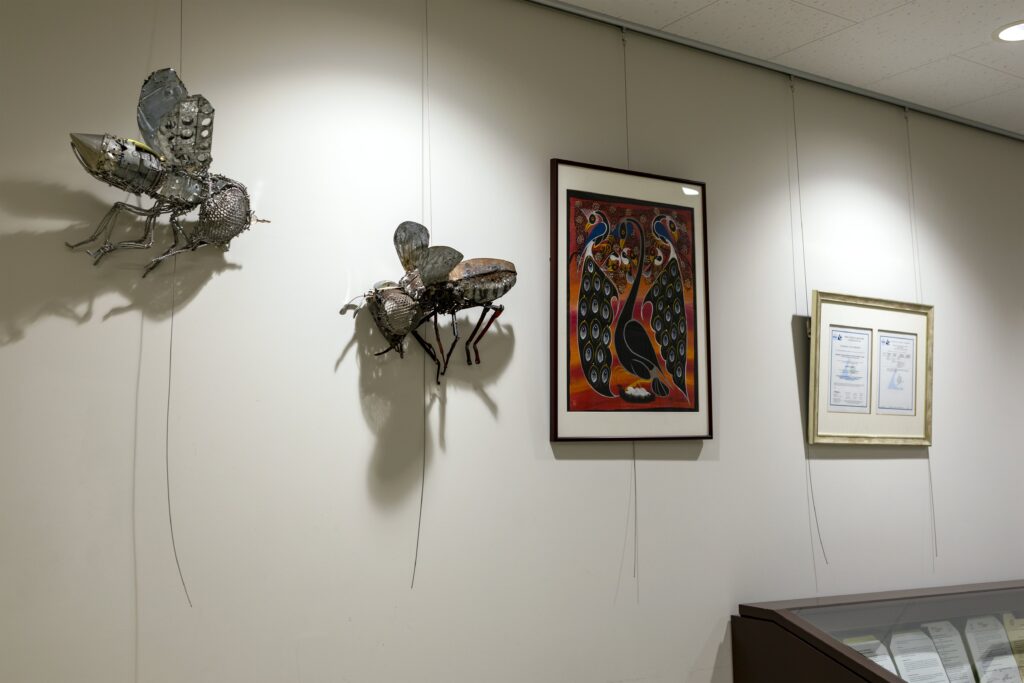This article was published in the Autumn 2020 issue of Litterae Populi. The full list of articles can be found here.
When, where, and how do pathogens creep into our daily lives? We are committed to safeguarding human health against the threat of emerging and re-emerging infectious diseases.
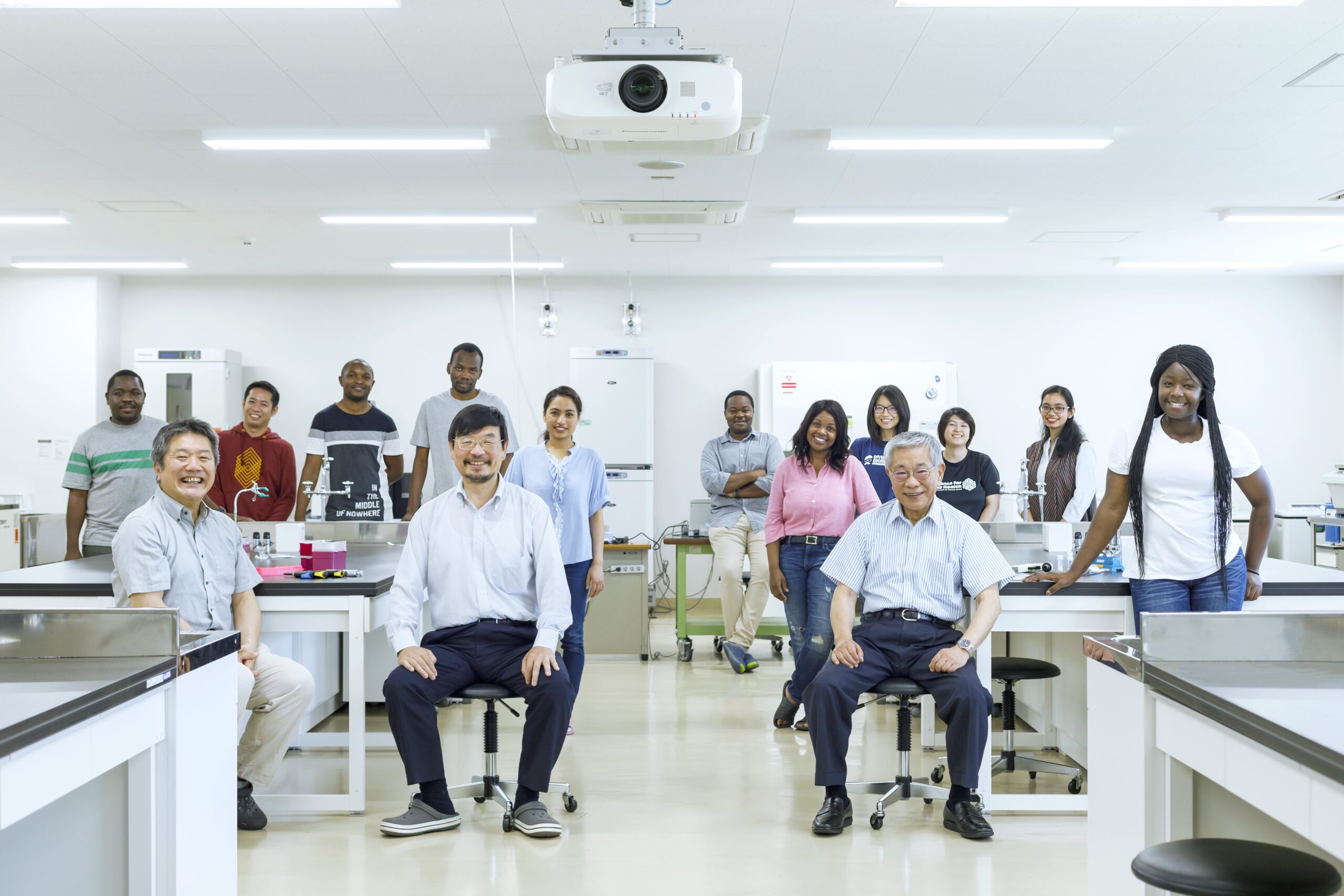
HUCZC faculty with international students from Zambia and elsewhere (at an HUCZC lab). From front right: Hiroshi Kida (head of the HUCZC), Yasuhiko Suzuki (director), and Hirofumi Sawa (vice-director). The HUCZC hosts numerous international students every year, fostering a wealth of talent.
Infectious diseases such as influenza, the Ebola hemorrhagic fever, SARS, and AIDS are caused by viruses initially carried by wild animals. These viruses jump to human populations because buffer zones between humans and wild animals have been eliminated by environmental changes due to deforestation, farmland expansion, irrigation, and other factors. The microorganisms are harmless in their natural wild animal hosts, but occasionally spread to humans, causing outbreaks of infectious diseases through human-to-human infection. These infectious diseases are called as zoonoses.
The Hokkaido University Research Center for Zoonosis Control (HUCZC) has aimed at zoonosis control since its foundation in 2005. Professor Yasuhiko Suzuki, the director of the HUCZC, outlines their activities: "The Center is designated by the Ministry of Education, Culture, Sports, Science and Technology as one of some hundred Joint Usage Research Centers for Collaborative Research. It has been leading Japan-wide efforts to combat infectious diseases through the Japanese Union for the Promotion of Infectious Disease Knowledge through Research and Education (JUPITRE), which also includes the Institute of Medical Science (The University of Tokyo), the Research Institute for Microbial Diseases (Osaka University), and the Institute of Tropical Medicine (Nagasaki University)." Composed of seven divisions, three units, and one overseas sub-center, the HUCZC engages in research, education, and international collaboration.
"While human-to-human transmission routes are easy to trace epidemiologically, only limited information is available on the transmission of pathogens from animals to humans," says Dr. Hiroshi Kida, Head and Specially Invited Professor of the HUCZC. New strains of influenza, COVID-19, and other emerging infectious diseases currently drawing attention are no exceptions; it takes herculean efforts to elucidate their animal-human transmission routes. Among the innumerable microorganisms present in nature, viral species alone number in the hundreds of thousands. There is no predicting which viruses will expand their host ranges into humans.
Preemptive strategies
Given these circumstances, the HUCZC has adopted preemptive strategies for sharing information about microorganisms carried by domestic and wild animals by creating a library based on the comprehensive isolation of such microorganisms. The idea is to use this information to develop diagnostic kits, vaccines, and therapeutic medicines. By convincing the government of the importance of preparing against the threat of zoonoses, the HUCZC leadership led to the founding of a research center for emerging and reemerging infectious diseases and the launching of research and education projects. This initiative involves multiple government agencies: the Ministry of Education, Culture, Sports, Science and Technology, which supervises research institutions in academia; the Ministry of Agriculture, Forestry and Fisheries, which overseas measures to fight infectious diseases of livestock and poultry; the Ministry of Health, Labour and Welfare, which has jurisdiction over disease control in humans; and the Ministry of the Environment, which supervises the investigation and preservation of wildlife ecosystems. The HUCZC also collaborates with international organizations, including the World Health Organization (WHO) and the World Organization for Animal Health (OIE), and organizations concerned in other countries.
Hokudai Center for Zoonosis Control in Zambia and "Zambianization"
The HUCZC established the Hokudai Center for Zoonosis Control in Zambia (HUCZCZ) at the University of Zambia's School of Veterinary Medicine in 2007, with the aim of elucidating the pathogens causing viral zoonoses prevalent in sub-Saharan Africa. The HUCZCZ is, in fact, the fruit of hard efforts by Professor Kida, who believes that, because infectious diseases know no borders, it is crucial to practice preemption in the countries where infectious diseases actually emerge. The opening ceremony of the HUCZCZ was reportedly attended by his excellency Kenneth Kaunda, the first president of Zambia.
The relationship between Hokkaido University and Zambia goes back years, to when the School of Veterinary Medicine was founded at the University of Zambia in 1985. "When His Majesty the Emperor Emeritus visited Zambia as the Crown Prince in March 1983, he learned from locals how Zambia was in dire need of a school of veterinary medicine," recounts Professor Hirofumi Sawa, HUCZC Vice-Director and HUCZCZ Director. The construction of the school building and facilities started in February 1984 with support from the Japanese government and was completed in 1986, followed by the launch of a master's degree program. "The faculty of the Hokkaido University School of Veterinary Medicine were deeply involved in the establishment of the school and have since built strong bonds of trust with their counterparts there," notes Professor Sawa. Today, the HUCZCZ serves as a full-fledged research center equipped with a biosafety level-3 laboratory.
The Hokkaido University School of Veterinary Medicine has also been engaged in personnel exchanges with the School of Veterinary Medicine at the University of Zambia. In fact, the faculty of the former have been helping the latter to develop human resources for three decades. The University of Zambia has a university staff-training course, and the Hokkaido University School of Veterinary Medicine has hosted numerous students from the University of Zambia. Today, the University of Zambia has a strong faculty lineup, with Zambian nationals having taken over the human resource development tasks once implemented by Hokkaido University faculty. Professor Kida cheerfully says, "This is what 'Zambianization' is all about. As their research levels improve, we simultaneously compete and cooperate to deliver results."
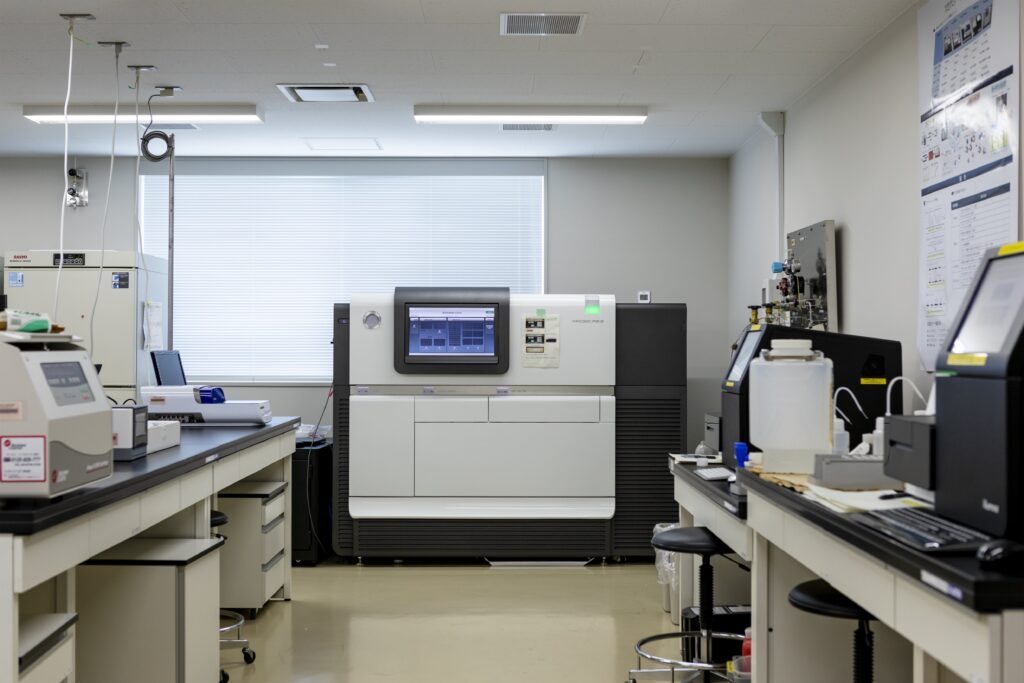
This next-generation sequencer allows large amounts of genetic data to be gathered within a short time, enabling the early detection of novel viruses.
Efforts to combat COVID-19
Knowledge of zoonoses and related analytical techniques gained through these activities have proved useful for efforts to bring COVID-19 under control.
Assistant Professor Kyoko Hayashida, who develops testing technology, used a genetic analysis technology known as LAMP (Loop-mediated isothermal AMPlification, developed by Eiken Chemical Co., Ltd.) to develop a technique for detecting the novel coronavirus. LAMP has been used in epidemiological studies of myriad pathogens at the HUCZCZ, too. Allowing gene amplification at a constant temperature within the range of 60-65 , LAMP does not require the precise temperature control of polymerase chain reaction (PCR) tests. This makes it relatively easy to conduct diagnostic testing in developing countries and remote areas of the world. The researchers are now verifying procedures that use the LAMP method, approved by the relevant ethical review committee, with clinical samples provided by Sapporo City General Hospital, a designated infectious disease treatment hospital.
Further, the HUCZC has established a new research division in collaboration with a private pharmaceutical firm to develop antiviral drugs.
Expert training for the future of our world
"Zoonosis control requires experts in infectious disease control," reckons Professor Kida. The HUCZC has produced 82 zoonosis control experts over the past decade through its zoonosis control expert training program and its unique human resource development initiative that has been implemented in partnership with the Hokkaido University Faculty of Veterinary Medicine. Those experts have contributed to zoonosis control in multifarious fields, including academia, international organizations (e.g., the WHO), government agencies in their home countries (e.g., health and agricultural ministries), and pharmaceutical firms. Director Suzuki contentedly says, "All these experts are our pride." Professor Kida stresses that love for humanity motivates their research. Driven by a sense of mission to make the Earth a happy place for all, HUCZC staff set their sights on the future of the world while also taking note of challenges associated with infectious diseases, including population and environmental problems.
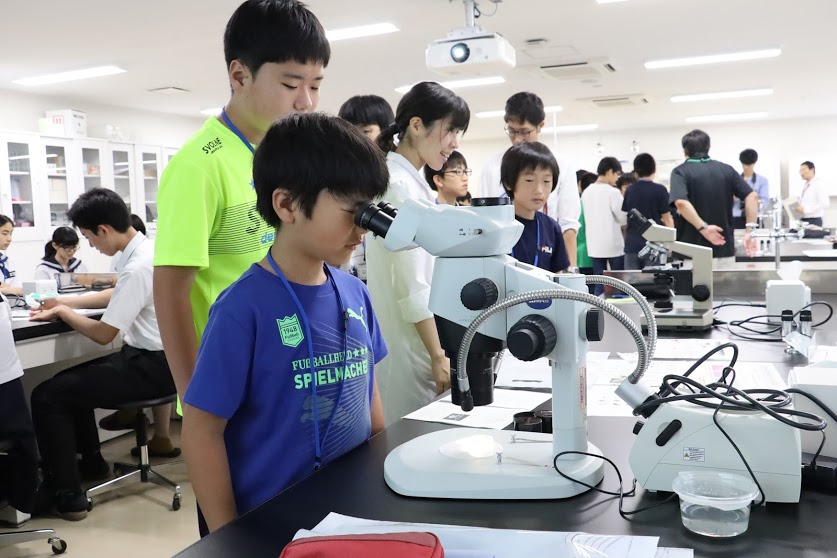
The Science Lecture 2019 was held at the HUCZC in July under the theme of "Wanna take a look at the risks? Learning about the cutting edge of infectious disease research by looking at mosquitos and ticks." The HUCZC is also putting efforts into explaining specialized topics plainly to the public.
In 2020, a research project at the HUCZC entitled "Development of Research and Human Resources for the Control of Zoonoses at the Hokudai Center for Zoonosis Control in Zambia" was selected for funding under the Japan Program for Infectious Diseases Research and Infrastructure (Emerging/Re-emerging Infectious Disease Project of Japan) of the Japan Agency for Medical Research and Development (AMED). As it plans to continue its manifold research and education activities to further advance research and cultivate human resources, the HUCZC is committed to continuing to lead the global fight against infectious diseases as an international collaborative research center for zoonosis control.
This article was published in the Autumn 2020 issue of Litterae Populi. The full list of articles can be found here.


